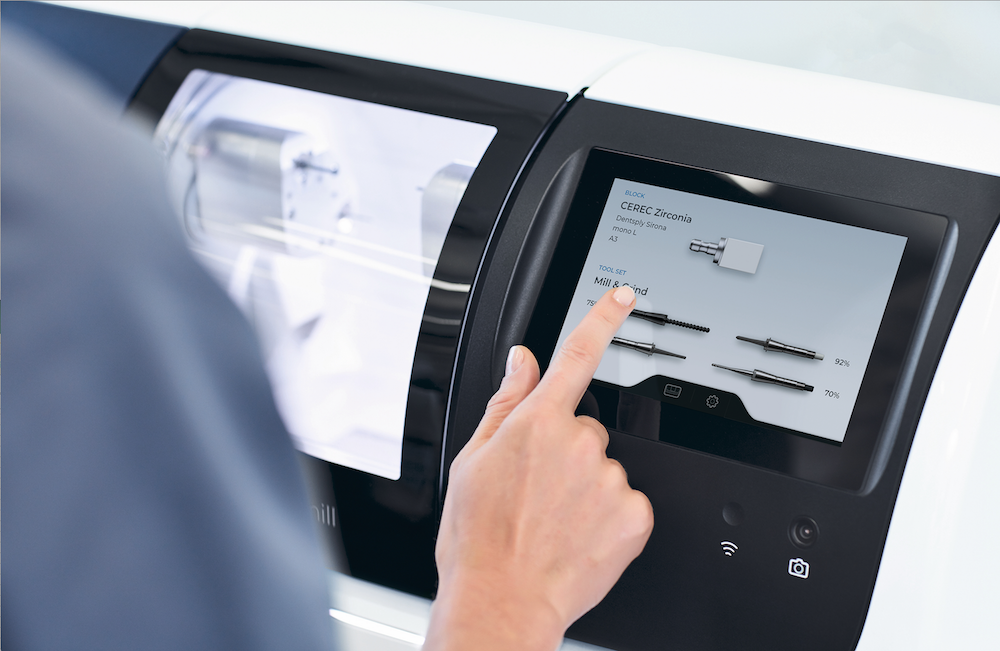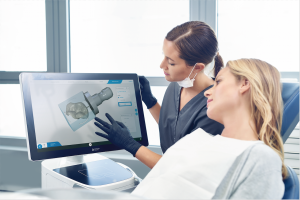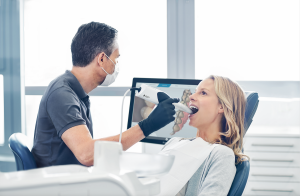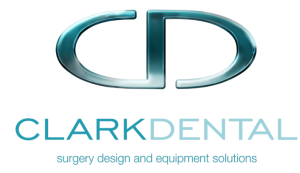Stepping out of your comfort zone
Featured Products Promotional FeaturesPosted by: Dental Design 28th March 2024

As with any aspect of life, it can feel comfortable to stick to what you know. This can apply to your work, using the same equipment, techniques, and treatment types out of habit or convenience, even when there might be a better, more efficient way of doing things. While it can come with a learning curve in some cases, embracing the digital dental revolution presents a number of benefits to the clinician, their dental team, and their patients. Digital chairside dentistry allows the clinician to offer more services to their patients, more quickly, thanks to streamlined workflows.
Adopting this type of software also allows practitioners to future-proof their dental practice, both by integrating modern technology, and training their dental team to operate digital equipment and software, preparing for future digital dentistry.
Enhanced communication
 Spare your patients the discomfort of conventional impression taking when you utilise an intraoral scanner in your practice. They are able to map out and create a three-dimensional model of the patient’s anatomy, without the need for using traditional impression materials, waiting for impressions to set, or causing the patient any discomfort or anxiety. Intraoral scanners are able to produce highly accurate representations of a patient’s mouth, while eliminating the risk of human error.[i]
Spare your patients the discomfort of conventional impression taking when you utilise an intraoral scanner in your practice. They are able to map out and create a three-dimensional model of the patient’s anatomy, without the need for using traditional impression materials, waiting for impressions to set, or causing the patient any discomfort or anxiety. Intraoral scanners are able to produce highly accurate representations of a patient’s mouth, while eliminating the risk of human error.[i]
The scans produced using this type of dental impression are also a fantastic tool for communication. This means that clinicians can effectively explain a patient’s situation, allowing them to understand any issues they have, and describe any potential treatment plans. In doing this, your practice will likely see a rise in case acceptance as patients have a better understanding of the treatment they need. Additionally, clinicians can more effectively communicate with other professionals quickly, using accurate visual data.[ii]
Reliability in treatment planning
Employing digital software can also help you to better plan treatment, and share with colleagues and dental technicians where needed. Additionally, with the  implementation of a 3D printer, for example, you are able to carry out a number of additional services within your own practice.
implementation of a 3D printer, for example, you are able to carry out a number of additional services within your own practice.
In a similar way to conventional impression taking, manual model making can generate inconsistencies due to human error. However, by using a 3D printer to produce dental appliances, you can improve accuracy.[iii]Research suggests that 3D printed models can be truer to the original reference when compared to conventional stone casts, making them preferable in many clinical scenarios.[iv] 3D printers also improve reproducibility,[v] helping to save time, reduce the risk of errors, and improve the experience for patients. This is perfect for reliable and predictable treatment when providing things like dentures and night guards, for example. 3D printers can provide practices with accuracy, efficiency, and precision which can contribute to improved treatment outcomes and an increase in patient satisfaction – giving your practice a boost.
Quality care from start to finish
 For practices who would like to offer complete workflows from within the practice, and even the same appointment, a chairside milling machine may be the ideal option. This allows clinicians to scan the patient, plan the restoration, and provide the restoration very quickly.[vi] This means that, should a patient require a zirconia crown, for example, they can expect a faster service, without having to wait in between appointments for manufacture in a dental lab. As this chairside equipment becomes more accessible for some, clinicians are able to carry out more treatment in house, for greater flexibility and shorter treatment times where appropriate.
For practices who would like to offer complete workflows from within the practice, and even the same appointment, a chairside milling machine may be the ideal option. This allows clinicians to scan the patient, plan the restoration, and provide the restoration very quickly.[vi] This means that, should a patient require a zirconia crown, for example, they can expect a faster service, without having to wait in between appointments for manufacture in a dental lab. As this chairside equipment becomes more accessible for some, clinicians are able to carry out more treatment in house, for greater flexibility and shorter treatment times where appropriate.
For clinicians who are ready to embrace the digital revolution, and introduce chairside CAD/CAM workflows into their practice, Clark Dental offers professionals the cutting-edge Cerec Primescan intraoral scanner, Primeprint 3D printer and the Primemill milling machine. The equipment works together to offer a seamless digital experience. With these systems you can create accurate, high-grade surgical guides for guided implant treatment and even produce zirconia restorations, in-house. Clark Dental also ensures that you are adequately supported, for total peace of mind. Additionally, practices are still able to collaborate with dental labs when handling complex cases to ensure the very best outcomes.
As digital dentistry continues to offer clinicians more benefits, and become more user friendly, there has never been a better time to step out of your comfort zone, and into the future. By mastering one aspect of the digital chairside workflow at a time, perhaps beginning with intraoral scanning, then 3D printing, for example, the process becomes very easy, and soon enough you’ll be able to offer patients a unique treatment experience. This level of customisability, communication, and convenience will enable you to attract new patients, and offer your existing ones a more streamlined and reliable treatment experience.
For more information call Clark Dental on 01268 733 146, email
info@clarkdental.co.uk or visit www.clarkdental.co.uk
STUART CLARK
MANAGING DIRECTOR
Having grown up within dentistry, Stuart has developed an unparalleled understanding of the industry. He is a technical specialist in digital imaging, pulling on his extensive experience as a Technical Director for Schick Technologies. Stuart is also an expert auto-CAD surgery designer and dental equipment engineer.
[i] Gurgurova, G., M. Grancharov, and G. Yordanova-Kostova. “ADVANTAGES OF INTRAORAL SCANNING IN ORTHODONTICS.”
[ii] Gurgurova, G., M. Grancharov, and G. Yordanova-Kostova. “ADVANTAGES OF INTRAORAL SCANNING IN ORTHODONTICS.”
[iii] Tas, Hilin, et al. “Evaluation of the accuracy of dental casts manufactured with 3D printing technique in the All-on-4 treatment concept.” The Journal of Advanced Prosthodontics 14.6 (2022): 379.
[iv] Tas, Hilin, et al. “Evaluation of the accuracy of dental casts manufactured with 3D printing technique in the All-on-4 treatment concept.” The Journal of Advanced Prosthodontics 14.6 (2022): 379.
[v] Tsolakis, Ioannis A., et al. “Comparison in terms of accuracy between DLP and LCD printing technology for dental model printing.” Dentistry Journal 10.10 (2022): 181.
[vi] Gupta, Gaurav, et al. “Customized Zirconia Crown in Pediatric Dentistry From Concept to Reality.” Avicenna Journal of Dental Research 15.1 (2023): 27-31.











